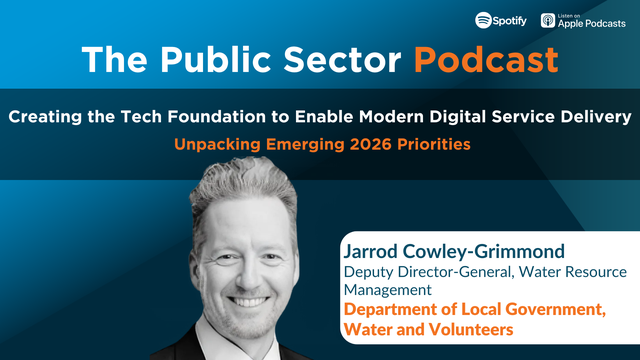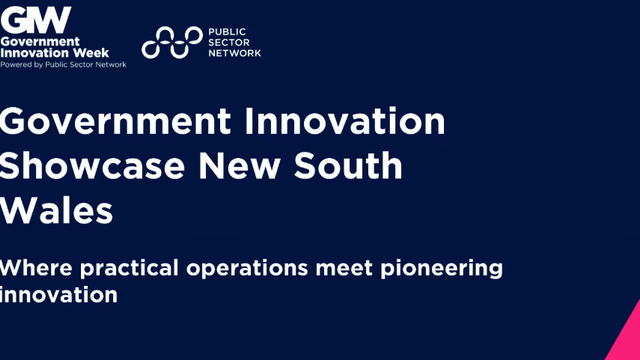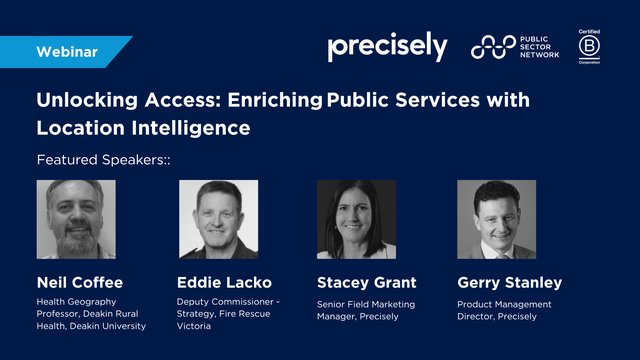Fostering inclusion and building trust with citizens by understanding limitations and delivering what they really want and need

Scott Cass-Dunbar
Chief Strategy Officer
Digital Transformation Agency
More than digital
For any government or public sector to succeed these days, they need to be digital. That doesn’t only mean using technology. It means being equipped to seamlessly work in the digital age. To assist in that process, the national Digital Transformation Agency (DTA) was set up in Canberra nearly five years ago. Scott Cass-Dunbar , the Chief Strategy Officer at the DTA, says that “digital today is much more than just technology.” At the DTA, when they think about the digital landscape, they think of it in terms of “technology as well as people, processes, policy and legislation.” All of these are important because these are the “levers that frame our response to deliver the best services that are truly inclusive for all citizens.” Ultimately it is about “putting the citizen at the centre of everything we do,” and this is the “core mission of the DTA.”
To achieve that mission, the DTA employs “all kinds of different individuals,” not just technology experts. The purpose of having such variety is to “build simple, clear and fast public services, underpinned by transparency and respect. That is what builds public trust.” In total, there are about 350 staff at the agency, responsible for “designing services for all the citizens, taking into account all perspectives, which is really complex.”
Limitations to engagement
To have true digital engagement, organisations and agencies need to be in the right frame of mind. However, the DTA has found over the last few years that there are a number of agency limitations that need to be addressed “to build inclusion and trust for the citizen:”
- Lack of proactive engagement – Citizens expect to only provide information to agencies once. “We need to become more proactive in terms of working with the citizen to let them have access to what they need, when they need it, in the right context.”
- No single source of truth – Citizens often have trouble “navigating around government” to find what they need when they need it. During the pandemic, “being able to bring information together was absolutely critical.” This needs to be part of all government services
- Uncertainty around entitlements and obligations – Citizens aren’t always clear about what’s available to them.
- Delivery expectations – “Citizens want simple, really quick, easy-to-use, intuitive deliveries and interactions, tailored to their needs, like in the private sector. Not complex, hard to use and time consuming delivery expectations.” Interactions need to be just as easy for those who are “highly digitally literate but also for those who interact through other channels.”
- Lack of a clear pathway to achieve an outcome – Citizens want to know how long something will take or how long the wait time will be for a government service. Not knowing if they will wait 10 minutes or an hour when they call Centrelink, for example, makes it “hard to plan their day, and makes it hard to build the best experience and trust for the citizen.”
- Inconsistent content – Government tends to create content that makes sense internally, but “there are lots of outside stakeholders that have very different needs and we need to be able to present the information in a way that is able to be consumed easily.”
- Interactions with non-government service providers – “There are other providers within the government ecosystem and citizens want to understand where they fit within the process and need to know who they’re actually dealing with.”
- Ease of use – “We need to ensure that there is simplicity of services, making sure that things are fast and easy to interact with.”
““So much of what we do is about talking to individuals and listening. Then we go out and design approaches, making sure that we design for everybody so that no-one is left behind.””
Changing the narrative
Knowing that these limitations exist, the DTA has a government experience (GovEx) team which “thinks about the whole journey from start to finish, the way different personas, or different cohorts within citizens, may interact with a service.” For instance, 2020 and the start of 2021 have shown that natural disasters are only likely to increase. To be prepared, the GovEx team looked through “between 1000 and 1,500 pieces of research, from royal commissions, to other inquiries and interviews. Not just looking at it form a digital approach.” The purpose of this was to build up an evidence base, “then to break it down into cohorts to digest and understand what the pain points are through each of the segments of a natural disaster.” To really understand how to cope before, during and after a disaster, this was then divided into two categories: “those that have experienced natural disasters previously, and those that haven’t. What this highlights is there are completely different learnings and different experiences depending on the cohorts.” There are also “common pain points and areas where improvements could be made.” From a digital perspective, the DTA can then “show visually the whole life journey from start to finish, highlighting what the experience has been and what the opportunities might be.” This “inclusive design is really critical to the way that we deliver much more inclusive services.”
This is an example of creating models to make life easier, and to “understand how people want to interact with government, how they want to work with us, what they need.” Working through the full lifecycle of an event allows that to happen because it exposes the gaps and pain points. Obviously it needs to be “nuanced and refined” for each case, but the concept is similar across the board.

Ultimately the role of the DTA is “to make things a lot simpler.” One example is “the concept of the front door to government.” The DTA has worked with Services Australia to ensure that the MyGov experience for customers is a lot more seamless. The project has been about “getting information presented to people in the right context, so that it drives a consistent experience and meets their needs.” Government is often perceived to be “multi-tiered,” which it is, but citizens generally think of government as one entity and “want to have a single interaction.”
To achieve this, the DTA works in collaboration with many partners both domestically and globally. “There are many learnings and obstacles that are very similar across jurisdictions.” Having a diverse team allows them to understand many of their customers, though they don’t always get things right. In fact, “we rarely get something right the first time.” But it is important to make attempts and work things out so that citizens can have a better and simpler interaction with government. In essence, all citizens of Australia are end users and customers, so there are really “25 million cohorts.” That means “we could be spending years trying to map and model every possible use case.” Of course that’s not how things work. It’s about iteration and designing for just the most useful and necessary cohorts or categories “and then you can build out from that base.” That way they can create a new narrative, “address the limitations and present information in the right context at the right time.”



































